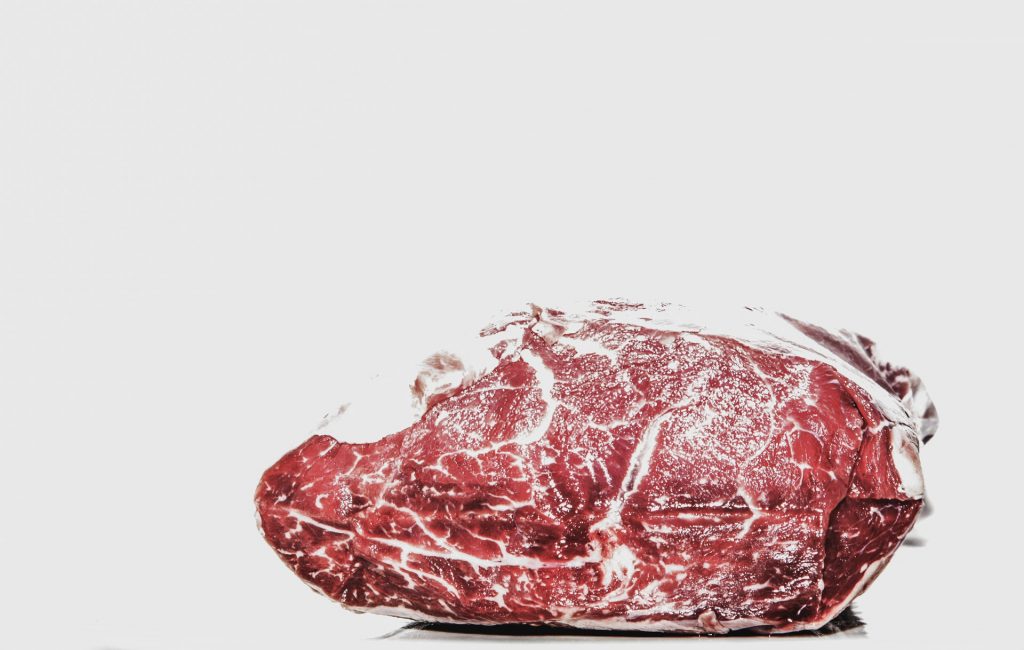This is a short introduction to these two diets. Though based on a similar low carbohydrate and high protein and fat diet, these two dietary lifestyle changes are very different. Understanding the basic concepts between the two and how they can positively affect the body when done correctly will aid you in deciding which and how to incorporate these diets into your lifestyle.

The Paleo Diet – Concepts and Theories
The Paleo diet was first commercialized as a weight loss and disease prevention aid. Coined by Professor of Evolutionary Medicine, Loren Coldain, it is based on evolutionary science from numerous fields of study, such as anthropology, archeology, medicine as well as nutritional science. It is based on the study of lectin. Lectins are intricate protein molecules, which are made within plants and animals alike. Each lectin carries upon itself a specific code that will allow it to bind only with a carbohydrate that matches that specific code. Similarly to what the blood type diet derives from their process, so does the Paleo, to a certain degree as it is entirely inclusive and does not create group restrictions.
In terms of weight loss principles, the Paleo does instill a few. An excess of insulin aids in weight loss, however when regulating the diet one needs to be careful and continue to consume wholesome balanced meals. In this respect, one needs to be mindful that an increase in omega 6, as well as arachidonic acid within meats, can lead to an increase in inflammation. Consuming too little protein, on the other hand, will lead to overeating as a result of lowering satiety signals within the brain. The best and necessary solution is to consume pasteurized and pasture finished meats. Such sources of protein instead of being acidifying, are slightly alkalizing – resulting in less inflammation within the body. If the meats consumed are from intensive livestock operations they will be highly acidic, this will place a strain on the body and instead of feeling better on the diet, an individual will feel worse.
The Paleo diet does place certain restrictions on what should and should not be consumed. The most primary of these restrictions is that this is a diet that, for the most part, only acknowledges food that was part of the human diet before the agricultural revolution. As a result, all grains, legumes, processed oil, refined sugars, all processed foods, and all dairy products are encouraged to be removed from the diet.
“Although there are many restrictions in place, the Paleo diet is not the diet of primitive cavemen. It does boast a slightly greater amount of lean animal protein to be consumed, however, it also urges upon the consumption of all carbohydrates in the form of vegetables and fruit, as well as consuming less starchy vegetables and fruits to obtain the necessary fiber within the diet. The consumption of healthy fat such as monounsaturated and polyunsaturated are stressed because an adequate amount of omega 3 and omega 6 are needed within the realms of a healthy diet. Other dietary principles for the Paleo diet include high potassium, low sodium, taking in foods that are net alkalinizing, as well as consuming plant foods rich in phytochemicals, minerals, and vitamins.
The Atkins Diet – Concepts and Theories
The Atkins diet centers upon the concept of a high protein, with less than 30 grams of carbohydrates a day. Atkins started as a diet to combat the effects of diabetes before insulin was invented; currently, it is more popular in the area of weight loss. It is believed that insulin is released when too much carbohydrates excess is left within the body, therefore a restriction is in place. Weight loss, on the other hand, is achieved through the lowering of carbohydrate intake, as it will result in a change to the metabolic state of the body. This change is classified as ketosis; the adjustment of the fuel source of the body from the primary glucose to ketone bodies.
It’s so logical and so simple. Fat is the backup fuel system. The role it plays in the body is that when there’s no carbohydrate around, fat will become the primary energy fuel. That’s pretty well known.
– Robert Atkins
Just as with the Paleo diet, the Atkins also restricts certain foods and lowers the consumption of others. All sugars, refined carbohydrates, whole grains, beans, peas, and legumes are significantly reduced. You can get your allowable 30 grams of carbohydrates from pure sugar if you so want to, but you are encouraged to get it from vegetables. Wheres, artificial sweeteners, black tea, diet soda, coffee, and Atkins bars are only lowered in their overall consumption.
Both the Paleo and the Atkins diet limit the consumption of refined carbohydrates, such as grains and legumes. Furthermore, both diets embrace a high protein, high fat, high meat diet. However, where the Atkins does not give restrictions, Paleo does – asking for only a slightly higher intake of protein from meat and instead of relying on a majority of food intake to come from vegetables and fats. There are specific differences between the diets as well. Paleo restricts the consumption of ay refined products, such as artificial sweeteners, Atkins, on the other hand, does not restrict such items. Secondly the state f the metabolism is quite different, in Atkins as a result of a very low intake of carbohydrates a state of ketosis can be reached, such a state is hard to achieve in Paleo.

The Benefits and Limitations of Paleo and Atkins
Both diets, which have a higher/slightly higher protein intake, do run the trouble of obtaining proper balance within the body. Paleo does hold a limit to the amount of protein consumed and strongly encourages the consumption of vegetables which assist in establishing a more alkalizing diet, which on the whole is much more balanced than the limitless Atkins diet. Supplementation may be needed to balance mineral counts within the body, especially with the Atkins diet.
In terms of health benefits and potential detrimental health effects, both have some if not followed correctly. Atkins for one had the potential, as a result of ketosis to cause dehydration through the amino acid decomposition of ammonia into the kidneys, in addition, demineralization of bones and muscle tissues occurs if the body is overly acidic. Furthermore, as it does not restrict all processed foods optimal health will be harder to seek. Another point which is taken into consideration in the Paleo diet but unfortunately not in the Atkins diet is the quality of meat and what the body derives from it, such as saturated fats, fillers such as hormones, msg and other ingredients not essential for human consumption. However, as was stated before, the low carbohydrate consumption that is presented in the Atkins diet makes it an ideal choice for diabetics as it can offset insulin intake.
The Paleo diet on this matter has been successful in aiding in the treatment of several illnesses along with diabetes; cardiovascular disease, metabolic syndrome, cancer and autoimmune disease to name a few. As it focuses on whole foods it provides the body with excellent sources of minerals and vitamins. Although it is a very strict diet, after the primary goal of the individual is achieved an 80-20 rule is put emplace which allows for more freedom to consume foods that would otherwise be restricted from the diet.
Overall, both diets have their benefits and limitations. Knowing the bounds of each diet is essential when partaking in them, as is knowing the functions of your body (in terms of how alkaline or acidic is maybe).
Biochemical Individuality of Atkins & Paleo Diets
There is such a variety of biochemical individuals in respect to diet type, some more realistic than others in their approach to understanding what would be best for one person in respect to another. For both Paleo and Atkins slow oxidizers would do rather poorly as they often rely on a rich carbohydrate diet as protein and fats are oxidized far too slowly within the body. Fast oxidizers, on the other hand, would thrive, especially on the Atkins diet as it has little to no protein restriction.
In terms of endocrine type, as each endocrine gland requires stimulation from specific foods it is more than likely that over time imbalances will occur within the body as one gland would become more dominant over the others if either a Paleo or Atkins diet was consumed. The reason being, that as carbohydrates are drastically restricted the glands dependant on carbohydrate consumption would decline in activity as those dependant on protein consumption would become overactive. Therefore such people would not be suited for either diet as they would be affected by more cravings for carbohydrates and refined sugars so as to obtain the balance that they need for endocrine gland stability.
In relation to the blood type diet theory proposed by Dr. Karl Landsteiner, blood types determine specific diets for the body as a result of antibody-antigen relation. The blood type diet reflects Dr. Karl’s belief in the history of blood type development, blood type O being the oldest originating prior to the industrial revolution. Therefore, it would be logical for the O type individual to consume either the Paleo or the Atkins diet as both reflect a diet prior to industrial cultivation. Blood type A would hardly find either diet suitable as a vegetarian diet would be best suited for that type. Blood type B would do considerably well as many legumes and carbohydrates are eliminated from the diet. More lean meats are recommended, less conventional animals are consumed, as well as a lot of vegetables – somewhat resembling the Paleo diet, over the Atkins one. Lastly, there is the AB type diet which leans more towards a seafood-vegetarian diet, low intake of processed sugars, grains, legumes, no alcohol or coffee consumption. It has the potential to thrive off both diets, more so the Paleo, however meat restrictions will make it slightly harder to obtain optimal health.
There are of course issue with the blood type diets’ historical accuracy of blood type history. Blood types A, B, and O are all some 20 million years old. When an individual who mainly consumes a diet high in processed foods switches to a diet full of wholesome ingredients they will find that any of the blood type diets will work for them.
Amanda Filipowicz is a certified nutritional practitioner (CNP) with a bachelor in environmental studies (BES) from York University. She also has certification in clinical detoxification, prenatal and postnatal care as well as nutrition for mental health. She has been working as a nutritionist since 2013 and is a lifelong proponent of eating healthy.

